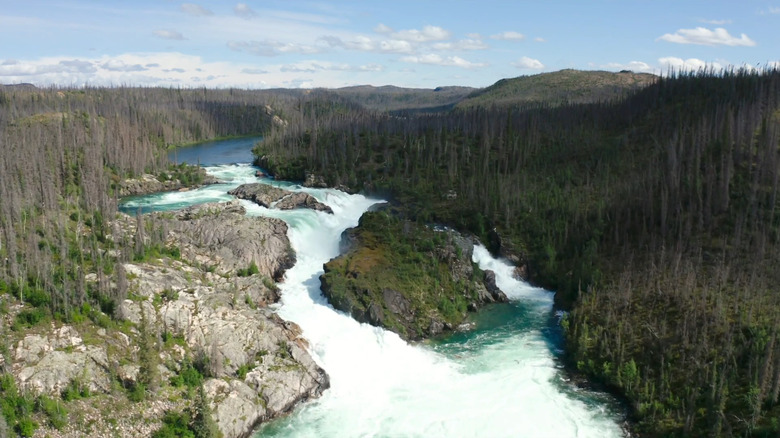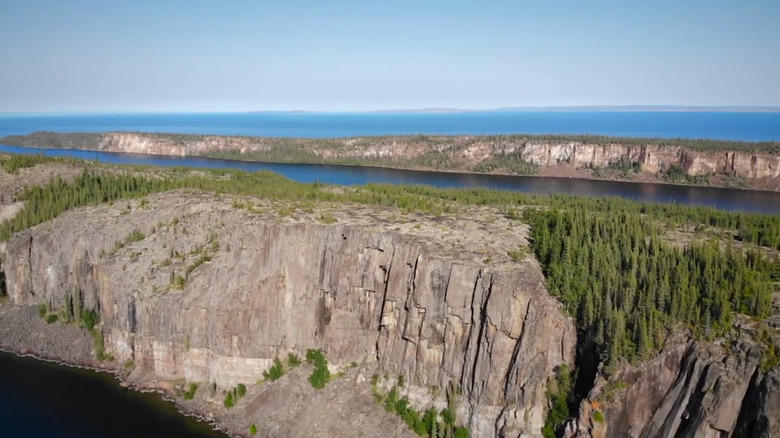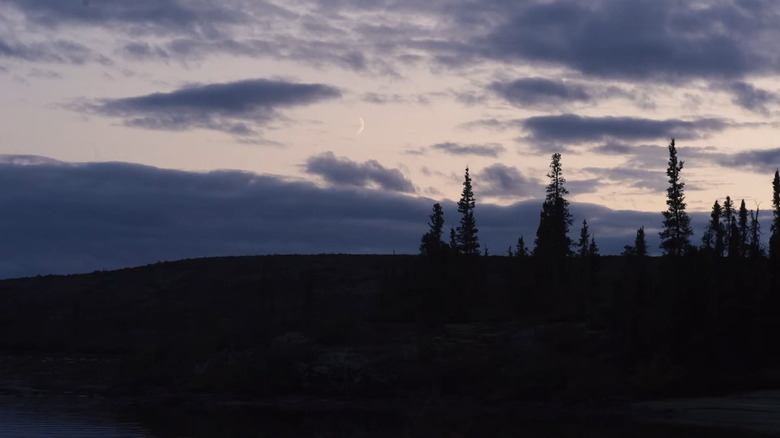This Remote Canadian Park Is Nearly Three Times The Size Of Yellowstone (And You've Probably Never Heard Of It)
Close to the Arctic Circle, where the tundra of Canada's Barren Grounds meets wild forest and fathoms-deep water hidden beneath the ice, is one of the newest and most fascinating national parks in Canada — Thaıdene Nëné National Park Reserve. There, you'll find foggy landscapes, frigid winds, rugged cliffs, mighty herds of shaggy muskoxen, temperatures well below zero, and in the summer months, 24 hours of daylight when you can experience the blazingly bright midnight sun.
Standing in this place is awe-inspiring because it feels as though you're seeing a raw glimpse of an entirely natural world, without the interference of humans. The reality is, people have been part of the complex ecosystems here for a long, long time. Its name translates to "Land of the Ancestors," and today, the descendants of those who have lived and worked this formidable landscape — the Indigenous groups Łutsël K'é Dene First Nation, Northwest Territory Métis Nation, Deninu Kųę First Nation, and Yellowknives Dene First Nation — collaborate with the Canadian national park system to protect this unique place.
What to do in Thaıdene Nëné National Park Reserve
This park is located along Great Slave Lake (named for a Cree term for an Athabaskan tribe which lived in the region) which is the deepest lake in North America, so deep that sunlight never touches the bottom. Its chilly surface, when it isn't covered by snow and ice, is one of the best ways to see Thaıdene Nëné. From a boat, you can take in the cliffs along the rocky shore. If you prefer to explore the land, it's an incredible hiking destination for those up for a challenge. You won't find any trails, just broad expanses of natural landscape. Consider going with a guide who knows how to navigate the reserve.
If you are willing to make such a long journey to Thaıdene Nëné National Park Reserve, you'll probably want to be there for more than a single day. You won't find a campground or established campsites, but camping is permitted anywhere you want to stop and put up a tent, from windy beaches to forest floors.
One of the more surprising activities allowed within the reserve is berry picking. If you come to the park in late summer or early fall there will be cranberries, cloudberries, and blueberries that you can pick and eat wherever you find them. Just make sure you know what to do if you see a bear, since they also enjoy foraging for delicious berries. While this isn't one of those national parks where you're almost guaranteed to see a bear, there are plenty of opportunities to see wildlife. This is a particularly great national park for bird lovers to seek out, with birds of prey like peregrine falcons and bald eagles nesting in the trees high above.
How to visit Thaıdene Nëné National Park Reserve
Part of what makes this staggeringly beautiful place so interesting is how remote it is and how few people ever see it with their own eyes. If you want to see this storied land for yourself, you will have to find a way there. That's easier said than done. There are no roads that drive into Thaıdene Nëné, so the usual ways to get there are to charter a flight, find someone to take you by boat, or snowmobile in across the drifting snow.
The only populated place near the reserve is Łutsël K'é, which is the ideal place to begin your journey. Yo get there, you'll need to start in Yellowknife, the largest city in the Northwest Territories, and charter a flight. There are more than 10 licensed operators who can bring you into the national park reserve, but your best bet is to arrange your entire trip with local Indigenous guides from places like Red Cliff Adventures or Chase East Arm Adventures. They know this land better than anyone else and can take you to the most incredible places within this vast wilderness. They can take you on boat rides to see Thaıdene Nëné from the shore, share traditional stories from the region, and help you camp within the reserve's borders.


